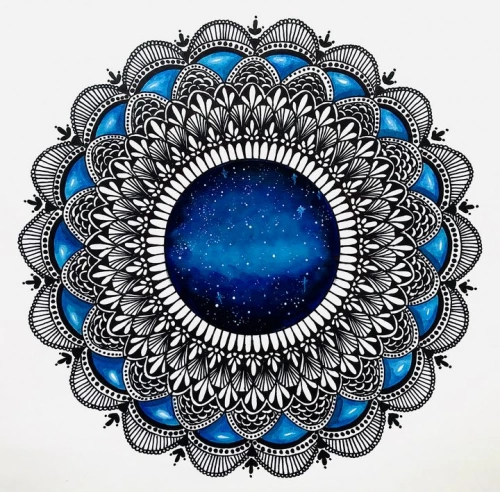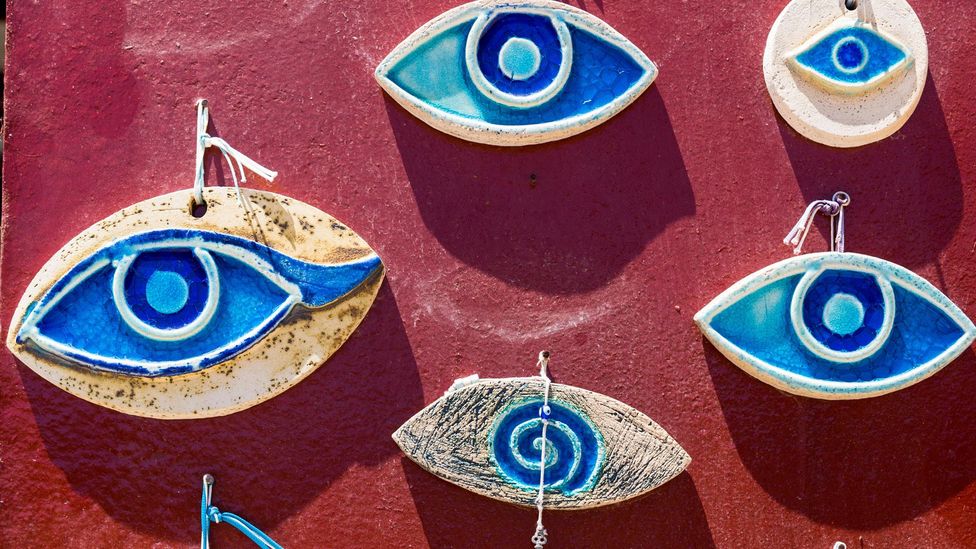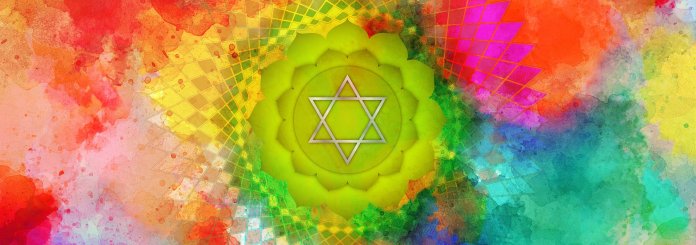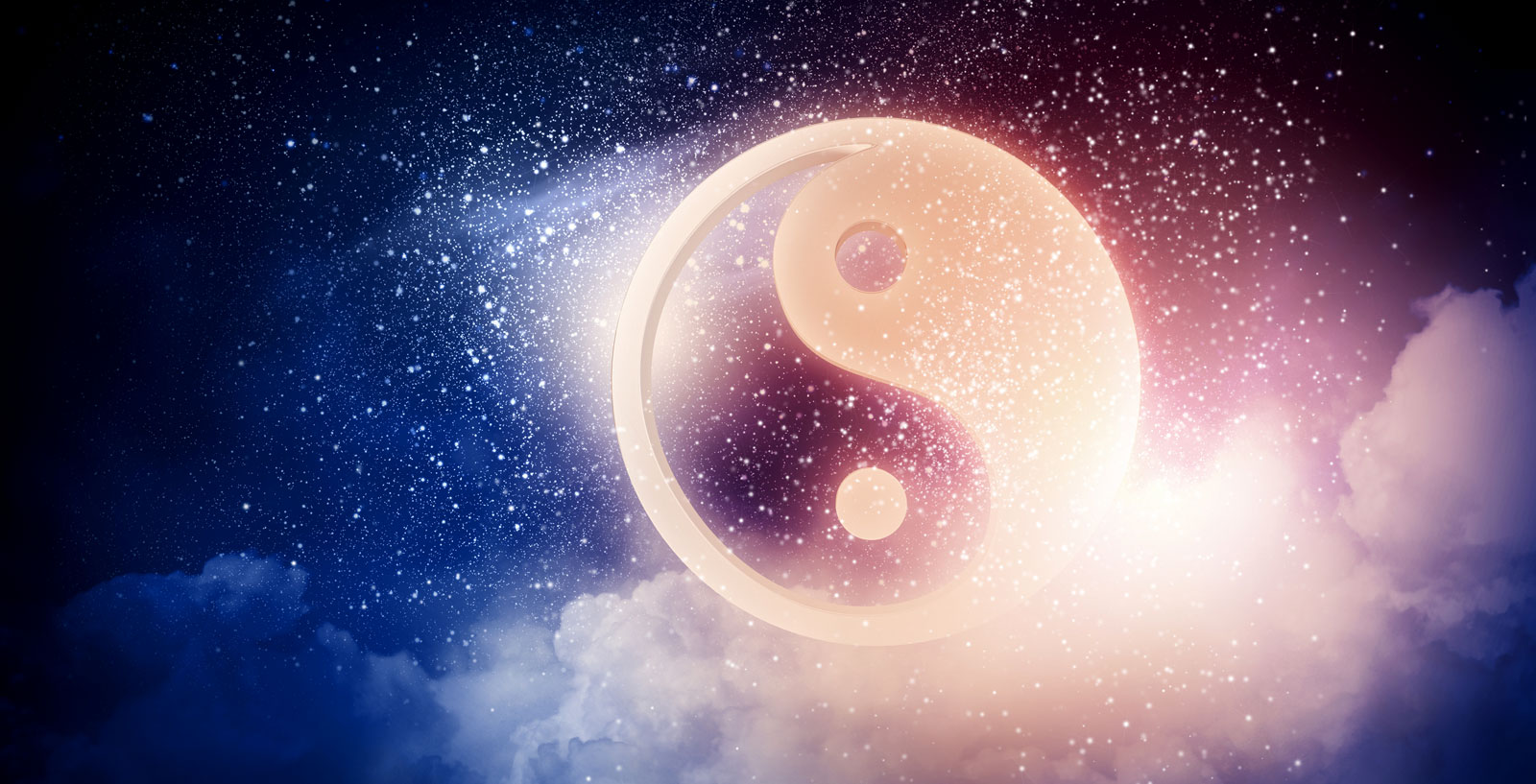

9 Common Spiritual Symbols - How To Use Them
BY : Dr. Sandeep Ahuja – Ayurvedic Practitioner & Wellness WriterTable of Content
If you've started dipping your toes into yoga, studying Eastern religion, or learning more about spirituality, you've probably noticed that some symbols appear over and over again: the Om symbol, the chakra chart, the lotus flower. So what do they all represent? Here is an overview of the meanings and history of some of the more common spiritual symbols to help you incorporate them with purpose and respect into your own practices:
1 OM

The Ohm symbol comes from Hinduism. "Yoga is all about union, and the symbol of OM represents it in the Hinduism. The symbol is included in the Vedas, the oldest Hindu scriptures, and denotes the breath of the universe, which is believed to be its original sound. ".
The various curves of this symbol represent waking consciousness, sleep, and deep sleep. The small curved line in the center, shows the illusion, and the line separates from the transcendent, which is represented by the upper figure.
How to use it:
He exclaimed "Om" while thinking about his connection to the universe.
2 Lotus flower

Another Hindu symbol, the lotus flower, represents "the womb of the universe from which all things are born," Sundaram told mbg. Even today, the lotus is the national flower of India, although it has been a part of Hindu culture for centuries.
"Lotus plants only grow in marsh areas, and that symbolizes this idea that because of ugliness, ruination and confusion, we can all come together in this perfect moment and we are all connected," she says. "In this sense, it also has an secondary relationship with the Buddhist idea of the world spirit."
How to use it:
Practice the lotus pose, or "padmasana," in which you squat with one foot placed on top of the other thigh. Then slowly pull your heels up to the top of your inner thigh and repeat with the other leg.
3 Hamsa
Hamsa is associated with various traditions. Today, it is a common symbol for warding off evil and negativity and is often found on jewelry and clothing. Sundaram notes that it has connections to Islam, Judaism, Hinduism, and Buddhism.
"In Islam and Judaism," she says, "it's about accepting off the evil eye, the idea of a guardian." "In Hinduism, it is often used as a synonym for the superior spirit or the ultimate truth, which is called 'Brahman', as well as being a means of knowledge. In Buddhism, it represents the universal spirit and its liberation from the cycle of rebirth, or samsara. "
How to use it:
Dress it up or put it in your private space to protect it.
4 Buddha

Siddhartha Gautama, who would be known as Buddha, lived during the 5th century BC. And since Buddhism grew, the image of it has been used to represent enlightenment, unity, and peace. Buddhism as a religion dates back to the teachings of the Buddha, and statues of the Buddha are common throughout the world in spiritual spaces. Sundaram says that the Buddha himself, sometimes depicted as Zen and sometimes laughing, can be seen as a native yogi and a teacher who dispels ignorance.
How to use it:
Study the Buddha's teachings and point to the statue as a symbol of what Buddha and Buddhism stand for.
5 Mandala

Mandalas have traditionally been associated with Buddhism and Hinduism. These intricate designs represent the world and the journey of the self. Its many layers illustrate the qualities necessary to achieve wisdom and enlightenment.
Buddhist monks use mandalas made of sand to symbolize impermanence and the need to transcend matter. "In the Buddhist tradition, it specifically represents temporariness," he says. "In the Hindu tradition, it shows the connection and the path between important and unimportant."
How to use it:
Draw your own mandala as a kind of animated meditation.
6 The evil eye

The evil eye is associated with Hamsa, a widespread theme in Judaism, Islam, Hinduism, Buddhism, and even ancient Greek and Roman cultures. The idea of evil eye is that someone is focusing too much on you. "They pay a lot of attention to you." The symbol dates back to the 6th century BC, and today it is often used or displayed as a talisman to protect against any ill will of the people.
How to use it:
Hang an evil eye at the entrance of your home to protect your home from external negativity.
7 The chakras

Like Om, the chakras are mentioned for the first time in the Vedas. We have many chakras in our body, but the seven main chakras work their way up the spine, starting at the base and working their way up to the top of the head. Think of it as your 'invisible body': I imagine it as a system of spiritual circulation with energy centers in different parts.
How to use it:
Depending on how you feel like your chakra is out of control, try chakra meditation to restore balance.
8 Namaste

Many yoga teachers will end their class by saying some variation of the phrase "The light within me honors the light within you - namaste." It's a nice feeling. However, Sundaram notes that the phrase has been overused and somewhat misunderstood. It means "I honor you," he explains, but in India, this simply means “hello”.
No one should use namaste, but we shouldn't give it a meaning that doesn't exist because that's when we start to be tempted by cultures we don't understand
How to use it:
Choose your phrase carefully and consider sharing a different word if you see yourself using a lot of namaste.
9 Yin and yang

Yin and yang represent male and female, light and dark, and the law of polarity. It has existed since before the 3rd century BC. C. In China, the idea of opposing forces has resonated in many cultures and schools of thought since then. In the end, yin and yang showed the balance and harmony inherent in nature.
How to use it:
Try yin yoga as a relaxing alternative to the most demanding flows.
Learning the history and meanings behind these common symbols can help you deepen your spiritual practice when done with respect. "Many times what we see is an eclectic display of Asian instruments, and the history of the symbols is erased," so make sure you understand the meaning behind what it does, adds Sundaram.
There is nothing wrong with wanting to take on practices or symbols that match with you and speak to your spiritual journey. The most important thing is to always practice with respect and really understand what you are hanging on the wall or saying after your yoga class.
Also, visit: Spiritual Guidance: Signs From Spirit
Most Creative Zodiac Signs
Author: Dr. Sandeep Ahuja – Ayurvedic Practitioner & Wellness Writer
Dr. Sandeep Ahuja, an Ayurvedic doctor with 14 years’ experience, blends holistic health, astrology, and Ayurveda, sharing wellness practices that restore mind-body balance and spiritual harmony.






.png)